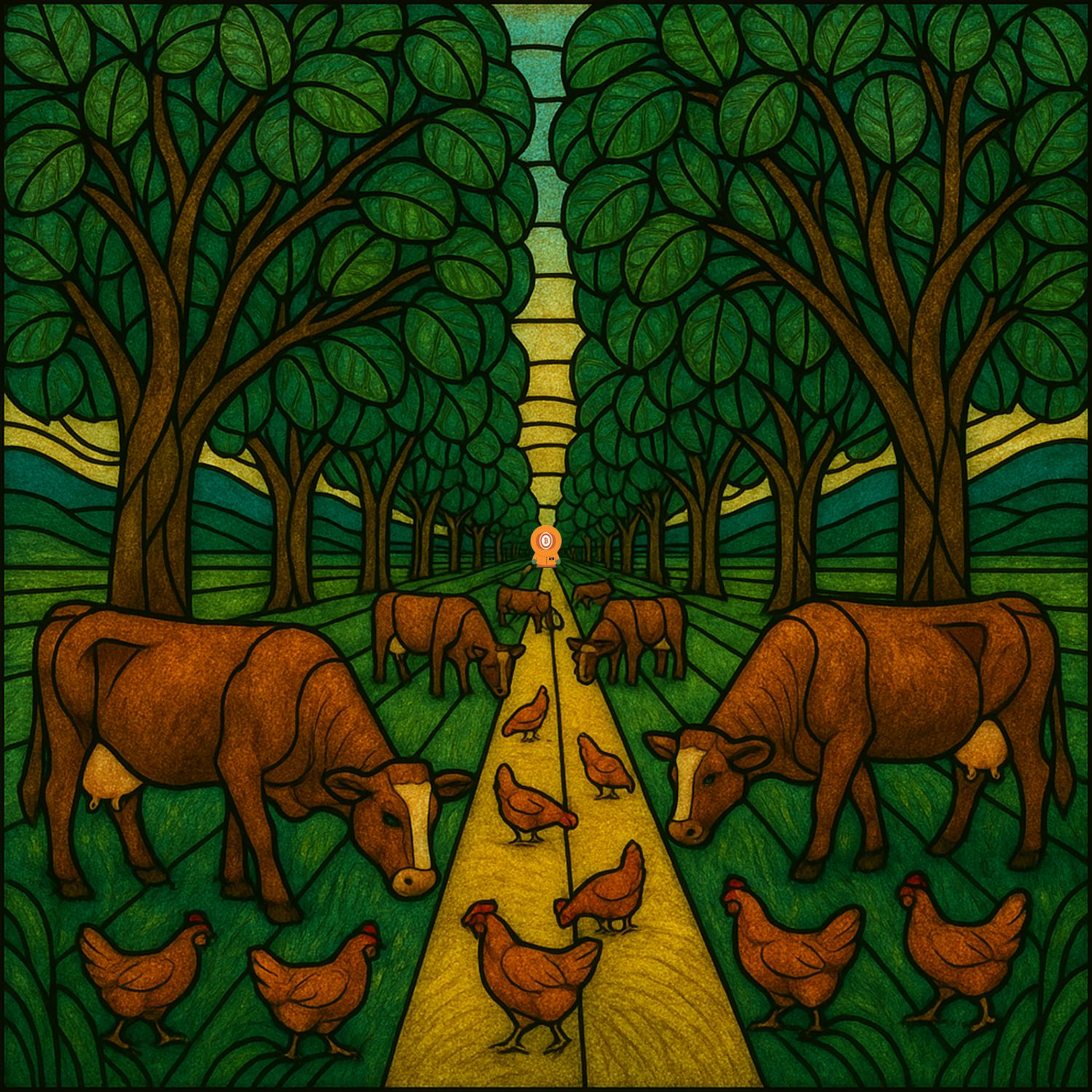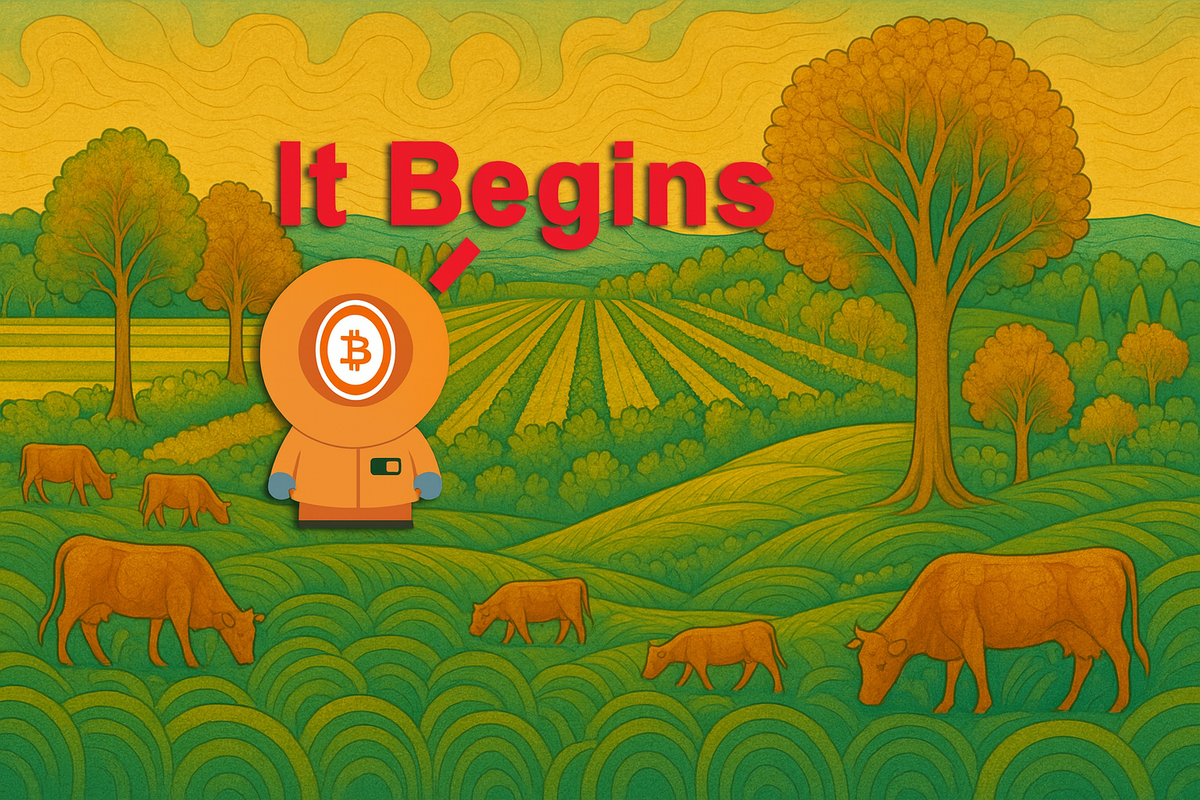8-20-2025
Cathedral grazing lanes support crops or livestock, chickens follow cattle in a fly-killing rhythm, sacred geometry guides layout and movement, locust trees provide fodder, and daily movement builds soil while feeding animals.

A 150-foot-wide grazing lane is also the width of five combine passes with a standard 30-foot header. That makes Cathedral flexible. If you need to alley crop, you can. But I’d rather graze. That’s where the real power lies; capturing solar energy through plants, transferring it to animals, and building fertility through movement.
Managed, rotational grazing is key to this whole system. It's the song played on Cathedral's organ. The cattle go in first, tightly packed for one day. Then they move, and we wait. Three days later, chickens follow. That delay is on purpose. It’s the key to breaking the fly life cycle. Flies lay their eggs in the manure then go off to bother the livestock, sometime in ways so bad it causes "fly-strike" which can stress, cause serious damage, or (sometimes) even kill. Fly maggots take about 3 days to hatch but right before they do . . . BOOM! The chickens move in and devour them. The chickens don’t need convincing either. They scratch, they eat, they fertilize. And as they tear through the cowpats, they mix seed, manure, and soil into the top inch of earth. Pasture is constructed and fortified, carbon lays down in the soils, water retention goes up, and native forbs get a fighting chance against grasses.

What emerges is a circle inside a square. Literally. Cathedral is designed as a square. Stable, grounded, foundational. But inside that square is movement. Daily grazing rotation becomes a sine wave traced through time, a circle of life spiraling through a structured space. It's sacred geometry, whether you like the term or not. It’s not "woo woo". It’s how humans have thought about land for thousands of years.
The tree lanes flank the grazing lanes. Half are honey locust, half are black locust. The honey locust drop sweet, sugar-rich pods between November and January, exactly when cattle need extra energy to maintain and increase weight in the colder months. Those pods can hit 750,000 kilograms a year in Cathedral's confines with young trees, and millions more when mature. Black locust, on the other hand, are for summer. We pollard one in five each year, harvesting high-protein leaves to supplement ruminant diets. Four kilograms dry weight per black locust tree, 12,000 kilograms per year (20 to 25% protein) from a fifth of the stand annually. It's not enough for a full ration but in addition to the already available graze and honey locust pods, it's one hell of a protein supplement.
All of this happens within a daily rhythm. At 5:30 AM, someone gets up, eats breakfast, and moves the herd. Maybe it's done with fencing. Maybe it’s e-collars and GPS. Either way, it’s manageable. The herd advances. The chickens follow. And at every step, we improve the land, build soil, feed people, and ignite a system that runs itself better the longer it goes.
Cathedral is built on time, space, movement, light, and life. You don’t have to believe in sacred geometry, but a square field full of cows circling toward soil restoration, one grazing pass at a time? There's a solemn power in that.
Cathedral I:

Cathedral II:






Member discussion: